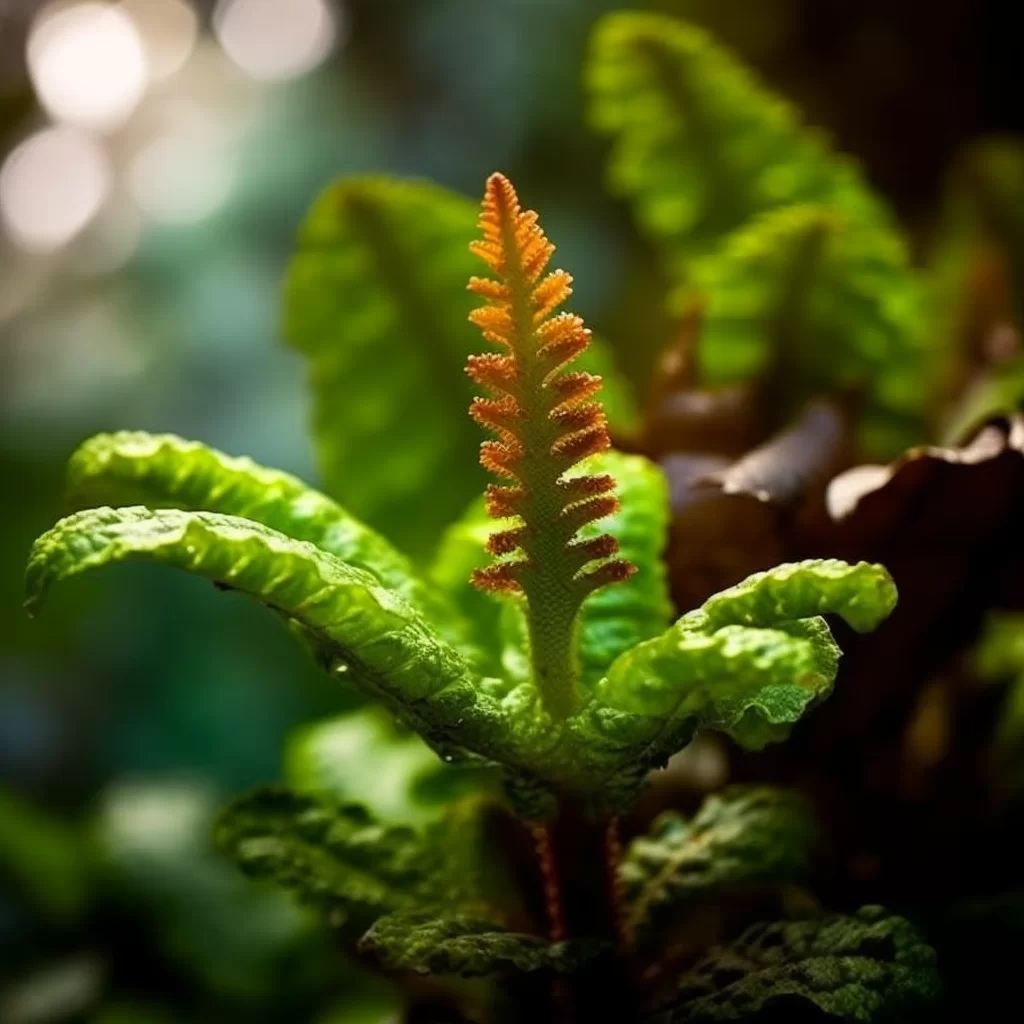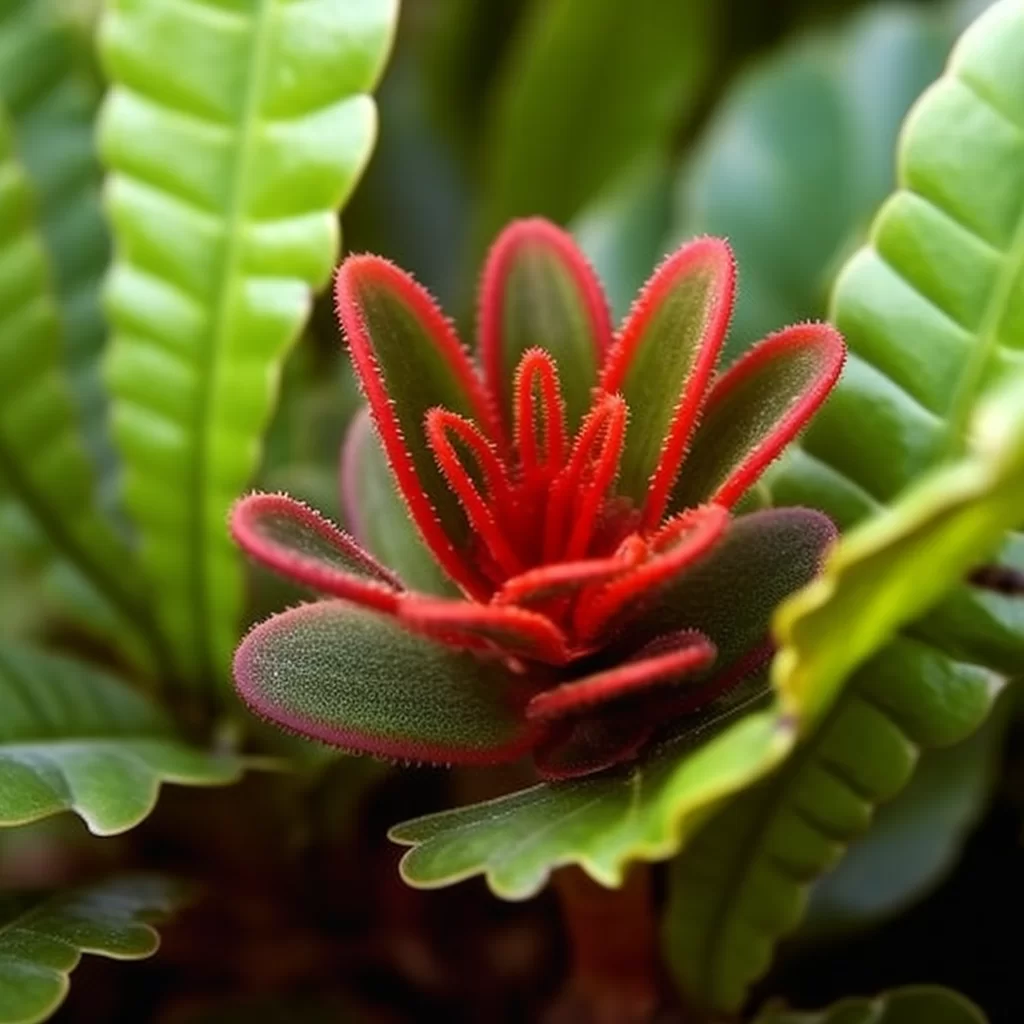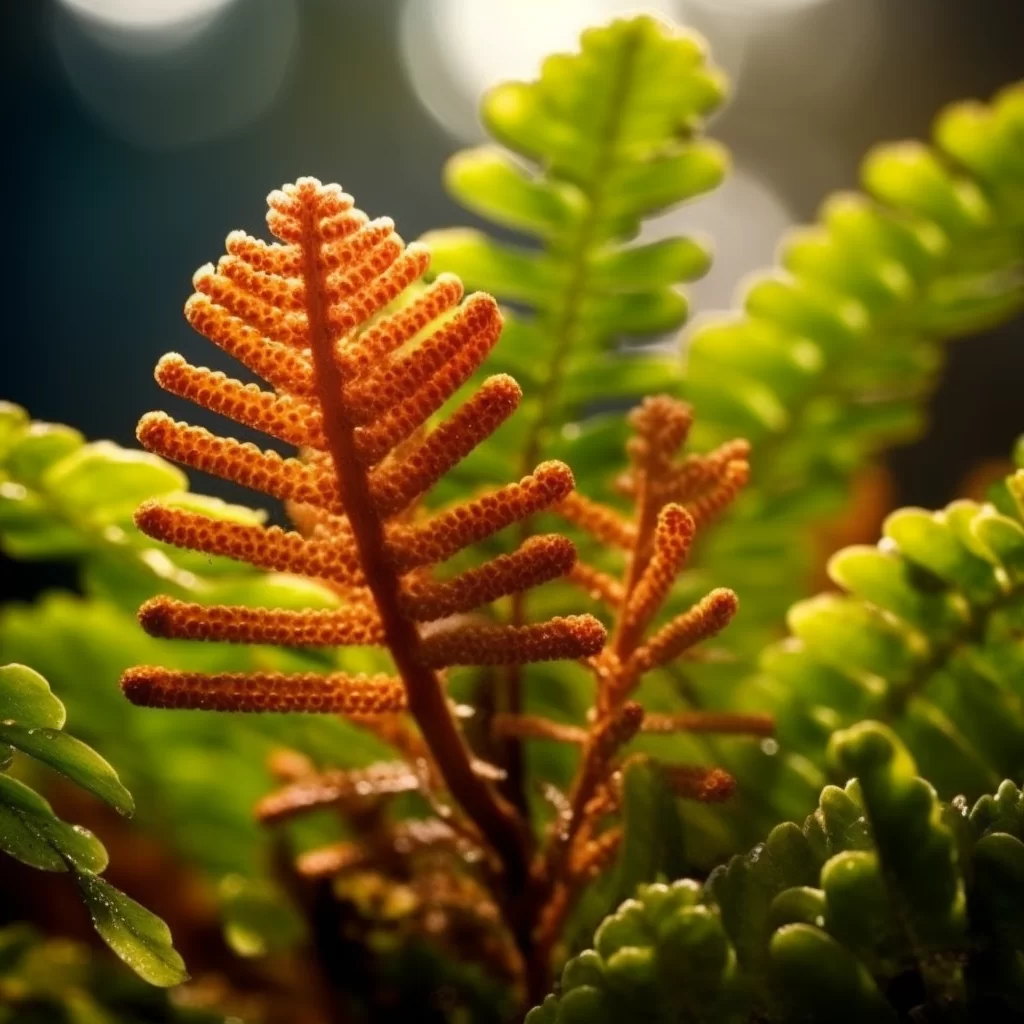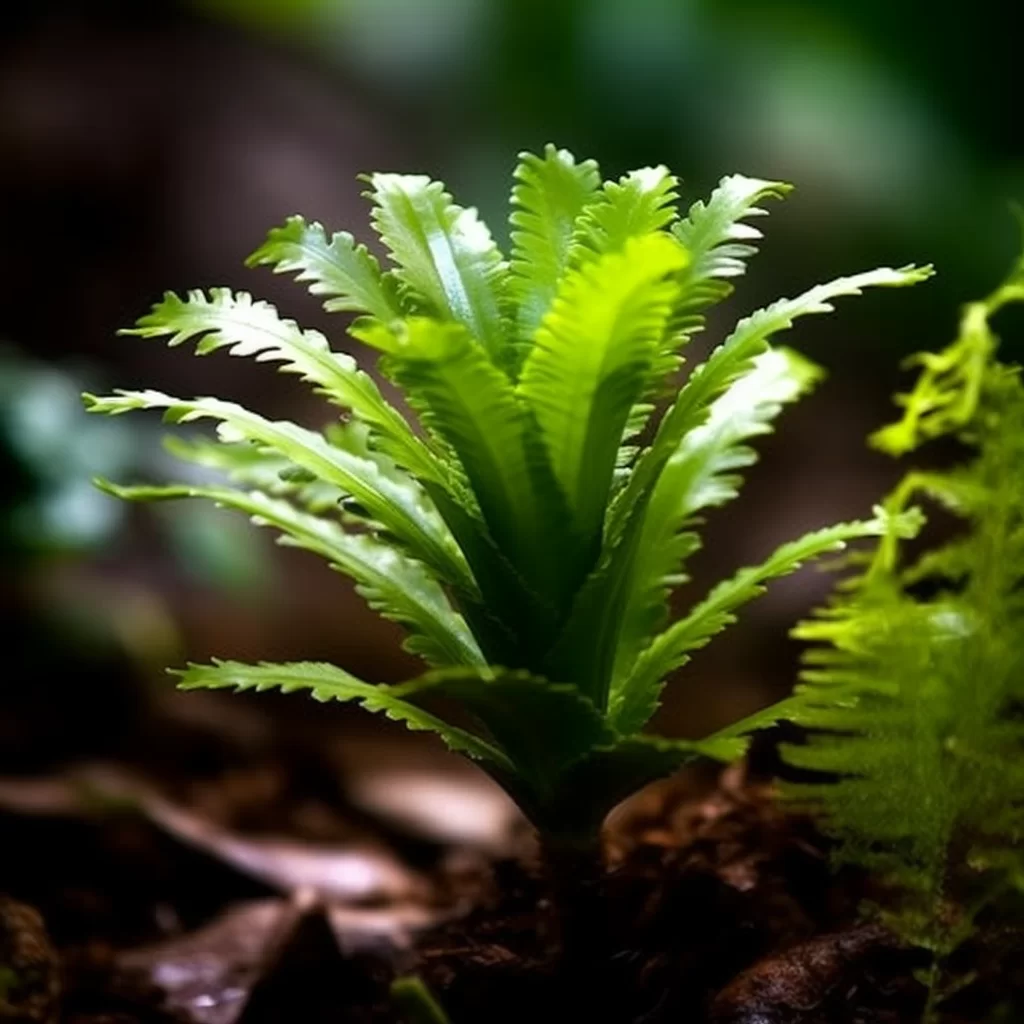Story of Day :
Contents
The Madagascar Jewel Plant: The Complete Guide and Care Tips
Gardening is an enjoyable pastime that has a positive impact on the well-being of many individuals.
Growing plants can be a therapeutic and rewarding activity that brings happiness to their caretakers.
Among the diverse variety of exotic flora, one plant that captures attention with its distinct appearance is the Madagascar Jewel Plant.
Its scientific name is Euphorbia leuconeura, and it belongs to the succulent family.
This unique plant boasts a fascinating combination of green and white stripes throughout its stem, which makes it an excellent addition to any indoor plant collection.The Madagascar Jewel Plant has many endearing qualities that make it an exciting selection for those in search of unusual houseplants.
It’s easy to care for, requiring minimal maintenance while still retaining its distinctive charm over time.
The fact that it requires little water makes it perfect for busy people since they can go on holidays without having to worry about their plants perishing from dehydration.
Its stunning foliage and low-maintenance nature make this succulent a standout option in any home decor or garden setting, providing endless joy and delight as each day passes by with this exceptional houseplant around!
What is the Madagascar Jewel Plant?
The Madagascar Jewel Plant is a unique succulent that can be found in tropical regions of Madagascar.
Its name comes from its remarkable appearance as it boasts spectacular bright green leaves with red veins and margins which give it a jewel-like quality.
It makes for an excellent plant to own as it can grow up to 3 feet tall and 2 feet wide, making it perfect for decorating any room or office space. This plant’s beauty lies not only in its striking appearance but also because it is easy to care for.
This plant’s beauty lies not only in its striking appearance but also because it is easy to care for.
The Madagascar Jewel Plant requires minimal watering, and indirect sunlight helps promote healthy growth.
Its ability to thrive indoors makes this plant an ideal choice for those who want to bring some exotic greenery into their homes without the need for extensive maintenance.
Overall, the Madagascar Jewel Plant is a stunning yet straightforward addition that will provide elegance and color wherever you place it!
Care Tips for Your Madagascar Jewel Plant
Have you ever laid eyes on a Madagascar Jewel Plant and felt completely mesmerized by its exotic beauty? Although it’s undoubtedly visually appealing, one must not overlook the effort required to properly care for this plant.
Fortunately, there are some tips you can follow to keep your Madagascar Jewel Plant healthy and thriving.
First and foremost, make sure that the soil is well-draining as these plants do not tolerate sitting in water for long periods of time.
Regular watering is also crucial as they prefer consistent moisture but be careful not to overwater as this can lead to root rot.
Additionally, ample sunlight is necessary for their growth but avoid placing them directly under intense sunlight as they prefer indirect light instead.In essence, taking care of a Madagascar Jewel Plant calls for a bit of dedication and attention from your part.
If you want your plant to flourish and display its full potential beauty, make sure you follow these tips religiously! By providing it with the right type of soil, regular watering routine, and proper lighting conditions – this plant will thrive under your loving care!

- Light: The ideal location for your plant would be near a window with bright but indirect sunlight.
However, avoid placing it in direct sunlight as this can cause leaf burn.
- Water: Water your plant sparingly as overwatering can lead to root rot and other diseases.
Wait until the soil dries out before watering again.
- Fertilizer: Fertilize occasionally during spring and summer using cactus fertilizer diluted by half strength or less.
- Potting Soil and Pot: Use well-draining soil mixed with perlite or sand in a pot with drainage holes at the bottom.
If you have a Madagascar jewel plant, it’s important to be aware of the possible pests and diseases that can affect your plant.
Common pests include spider mites, mealybugs, and scale insects.
These pests can cause damage to the leaves and stems of your plant, making it look unhealthy and affecting its growth.
To prevent these pests from infesting your Madagascar jewel plant, make sure to regularly inspect it for any signs of infestation and take prompt action if needed.In addition to pests, there are also several diseases that can affect your Madagascar jewel plant.
One common disease is root rot, which is caused by overwatering or poor drainage.
This disease causes the roots of the plant to rot away, leading to wilting leaves and eventual death if left untreated.
Other diseases include leaf spot and powdery mildew, which can also cause damage to the leaves of your plant.
To prevent these diseases from affecting your Madagascar jewel plant, make sure you’re providing proper care such as well-draining soil and avoiding overwatering or underwatering.
The Madagascar Jewel Plant is no exception when it comes to facing the risk of pests and diseases.
Despite being a resilient plant, it can still fall prey to various harmful elements that can potentially damage its growth and health.
Therefore, it’s essential for every plant owner to be aware of some of the common pests and diseases that may attack this unique species. As an indoor plant enthusiast or a gardening hobbyist, you should keep an eye out for potential threats such as spider mites, mealybugs, scale insects, or whiteflies that may infest your Madagascar Jewel Plant.
As an indoor plant enthusiast or a gardening hobbyist, you should keep an eye out for potential threats such as spider mites, mealybugs, scale insects, or whiteflies that may infest your Madagascar Jewel Plant.
These tiny creatures feed on the sap from the leaves and weaken the overall structure of your precious plant.
You should also watch out for bacterial or fungal infections like root rot or leaf spot disease that may cause discoloration in leaves and eventually lead to death if left unchecked.
With proper care and attention, however, you can protect your Madagascar Jewel Plant from these pests and diseases ensuring its sustained growth over time.
- Mites: These tiny insects infest leaves, causing them to turn yellow or brown.
- Fungal Diseases: Overwatering can cause fungal infections leading to stem or root rot.
- Scales and Mealybugs: These insects attach themselves to stems and leaves sucking sap from plants.
Tips on How You Can Deal with Pests and Diseases
If you happen to spot any indications of an infestation on your Madagascar Jewel Plant, fret not as there are several measures that you can take to eradicate the problem.
Firstly, make sure that you isolate the plant from your other healthy plants to prevent the infestation from spreading.
Then, prune off any infected or damaged leaves and stems to reduce the severity of the problem.
You can also use a mild insecticide or fungicide spray specifically designed for houseplants to eliminate pests and diseases.
In addition, ensure that your plant receives adequate sunlight and moisture as a healthy plant is more resilient against pests and diseases. It’s essential to keep an eye on your Madagascar Jewel Plant’s condition regularly so that you can quickly detect any signs of an infestation before it gets severe.
It’s essential to keep an eye on your Madagascar Jewel Plant’s condition regularly so that you can quickly detect any signs of an infestation before it gets severe.
Early detection means early action in dealing with these pesky pests and diseases affecting your beloved houseplant! By following these simple tips, you can effectively control and prevent future pest problems while keeping a flourishing Madagascar Jewel Plant in your home garden for years to come!
If you’re an avid plant enthusiast, you know that pesky mites can be a real pain.
Luckily, there are several easy ways to keep them under control.
One effective method is to clean your plants regularly using neem oil or a mild soap solution.
This will help to keep mite populations at bay and prevent them from spreading to other plants in your collection.
If that doesn’t do the trick, consider using a miticide treatment.
However, it’s important to use caution when administering this option as the chemicals used can be harmful if not applied correctly.When it comes to keeping your plants healthy and thriving, preventing mite infestations is key.
By taking preventative measures such as regular cleaning and utilizing natural remedies like neem oil or soap solutions, you can help avoid the need for harsh chemical treatments down the line.
But if things do get out of hand and you find yourself facing a larger-scale mite problem, don’t despair! There are options available for treatment including miticides; just make sure you handle these substances with care so as not to cause harm unintentionally.
With vigilance and patience on your part as a plant parent, those annoying bugs won’t stand much of a chance!I’m sorry, there is no original text provided.
Could you please provide me with the text you would like me to rewrite and extend?
The movie, “Jaws,” is a classic thriller that has been popular for decades.
Released in 1975, it tells the story of a giant man-eating shark that terrorizes the fictional town of Amity Island.
The film was directed by Steven Spielberg and starred actors Roy Scheider, Richard Dreyfuss, and Robert Shaw.
Its iconic music score composed by John Williams adds to the suspenseful atmosphere of the movie.
Despite its age, “Jaws” remains a highly regarded film due to its groundbreaking special effects and intense storyline.The success of “Jaws” led to three sequels as well as inspiring other films about killer sharks in pop culture.
It also had an impact on society by causing fear and concern towards sharks which led to a decrease in their population due to overhunting and fishing practices.
Overall, “Jaws” is not only an entertaining movie but also a significant piece of American cinema history with lasting cultural effects still felt today.
I’m sorry, there is no original text provided.
Could you please provide me with the text you would like me to rewrite and extend?The movie, “Jaws,” is a classic thriller that has been popular for decades.
Released in 1975, it tells the story of a giant man-eating shark that terrorizes the fictional town of Amity Island.
The film was directed by Steven Spielberg and starred actors Roy Scheider, Richard Dreyfuss, and Robert Shaw.
Its iconic music score composed by John Williams adds to the suspenseful atmosphere of the movie.
Despite its age, “Jaws” remains a highly regarded film due to its groundbreaking special effects and intense storyline.The success of “Jaws” led to three sequels as well as inspiring other films about killer sharks in pop culture.
It also had an impact on society by causing fear and concern towards sharks which led to a decrease in their population due to overhunting and fishing practices.
Overall, “Jaws” is not only an entertaining movie but also a significant piece of American cinema history with lasting cultural effects still felt today.If you’re dealing with a fungal disease on your plants, it’s important to act quickly.
As soon as you notice any infected parts, such as stems or leaves, it’s crucial to remove them right away.
In some cases, this may mean removing entire sections of the plant to prevent further spread of the disease.
To keep the infection from spreading to other plants in your garden, consider isolating the affected plant until you can bring it under control.One effective method for controlling fungal diseases is by reducing water intake and maintaining appropriate humidity levels for your specific plant species.
By doing so, you can create an environment that discourages further growth and spread of the infection.
It’s also important to stay vigilant and monitor your plants regularly for any signs of new infections or symptoms that may indicate a more serious issue.
With prompt action and proper care techniques, you can help keep your garden healthy and free from damaging fungal diseases.Scales and mealybugs are common pests that can cause damage to plants.
One effective way to control scales is through manual removal.
This involves wiping them away with alcohol-soaked cotton swabs, especially when they are still young.
However, if the infestation is severe, using insecticidal soap may be necessary.
It is important to spray this solution all over the leaf surfaces to ensure that each one is covered and that the pests are effectively eliminated.Taking good care of plants requires keeping an eye out for pesky insects like scales and mealybugs.
If left unchecked, these pests can cause significant harm to your plants by sucking their sap and weakening them over time.
Fortunately, there are ways to control these insects effectively without resorting to harsh chemicals or pesticides.
By manually removing scales when they’re young or using insecticidal soap in case of serious infestations, you can keep your plants healthy and thriving all year round!In summary, the conclusion is the final section of a piece of writing that provides closure and summarizes the main points.
It’s essential to have a strong conclusion, as it leaves a lasting impression on the reader and helps them understand what they’ve learned from your work.
The best way to write a powerful conclusion is to restate your thesis statement in different words and offer some final thoughts or recommendations based on your findings.
A good rule of thumb is to keep it concise but comprehensive, focusing on the most important ideas you’ve presented throughout your paper.Furthermore, conclusions can be challenging to write because they require balance between summarizing key points while avoiding repetition.
One effective technique is to use different language than what was used in earlier sections or take a broader view than was done previously in order not only remind readers but also allow for new insights into the subject matter at hand.
Additionally, incorporating rhetorical questions or discussing implications can help leave readers thinking beyond just their own immediate understanding of an issue – making for more meaningful conclusions that engage people long after they read them!
The Madagascar Jewel Plant is a fantastic addition to any indoor space.
Its distinct appearance and vibrant colors can bring life and beauty to any room.
But, like all plants, it requires special care to grow healthily and thrive.
Luckily, with the tips we’ve provided above, you have all the knowledge you need to make sure your Madagascar Jewel Plant flourishes.Caring for a Madagascar Jewel Plant might seem overwhelming at first, but with the right guidance and attention, it can be an enjoyable experience.
By following our tips on watering frequency, light exposure, and soil type, you’ll ensure that your plant remains healthy and grows beautifully over time.
Not only will its unique features add character to your home decor – caring for this plant can also provide a satisfying sense of accomplishment as you watch it grow and flourish under your watchful eye!